Abstract
To amplify recent interest in anaerobic infections following abdominal disease, trauma, or surgery, 512 consecutive patients subjected to emergency celiotomy had both aerobic and anaerobic cultures taken of peritoneal fluid as well as all complicating wound and intra-abdominal infections. Average time between peritoneal entry of abscess drainage and specimen incubating under anaerobic conditions was less than two minutes. During 4 of the seven study months, patients had antibiotic therapy randomized, with clindaymcin or cephalothin being sole parenteral agents and given intravenously prior to operation and for 5 days thereafter. Results demonstrated that anaerobes uniformly contaminate the peritoneal cavity whenever distal or obstructed intestine has been perforated, irrespective of the cause. Although all but one of the 123 complicating wound and intra-abdominal infections were due solely or at least in part to aerobic pathogens, 2/3 of such infections also contained one or more different anaerobic species acting in synergism with the aerobes. No significant difference in incidence of postoperative infection or in infecting bacteria could be found with respect to antibiotic administered or etiology of perforation. Indeed, duration of bacterial exposure to atmospheric oxygen was the most critical factor influencing culture recoverability of anaerobic organisms, likelihood of ensuing wound or peritoneal sepsis participated in by an anaerobe, and success in control of established infections harboring anaerobes.
Full text
PDF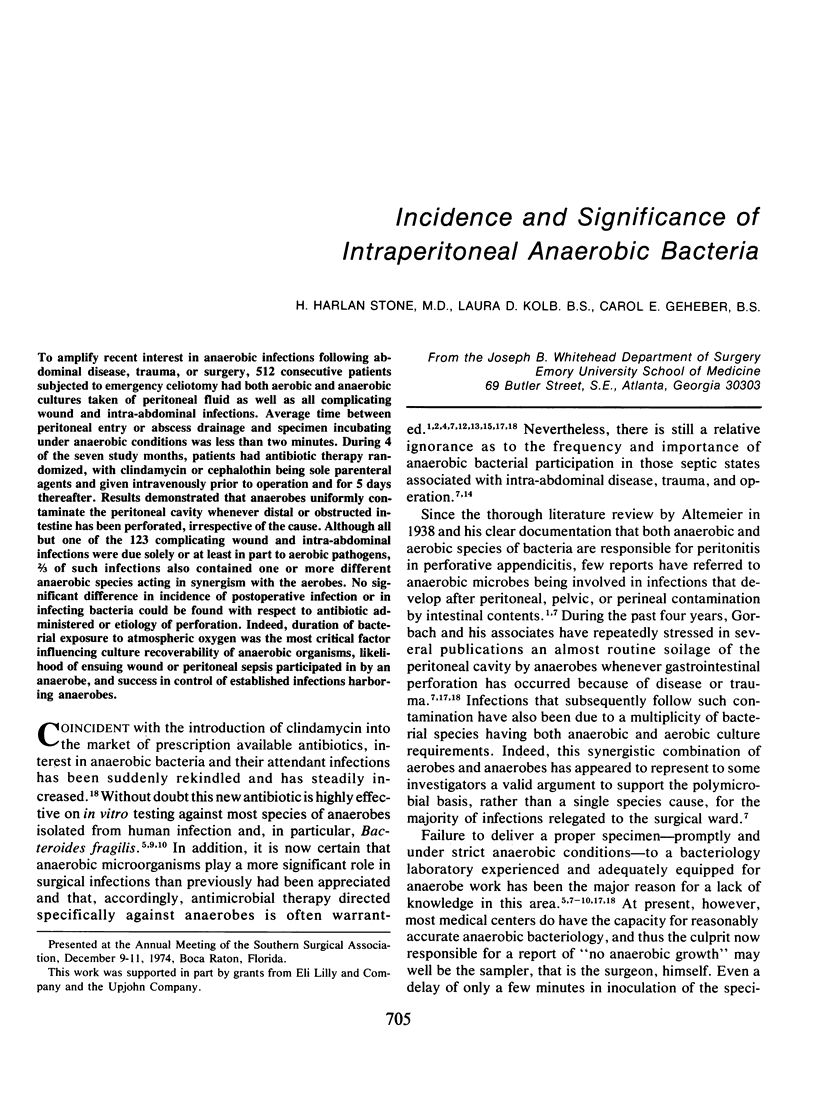
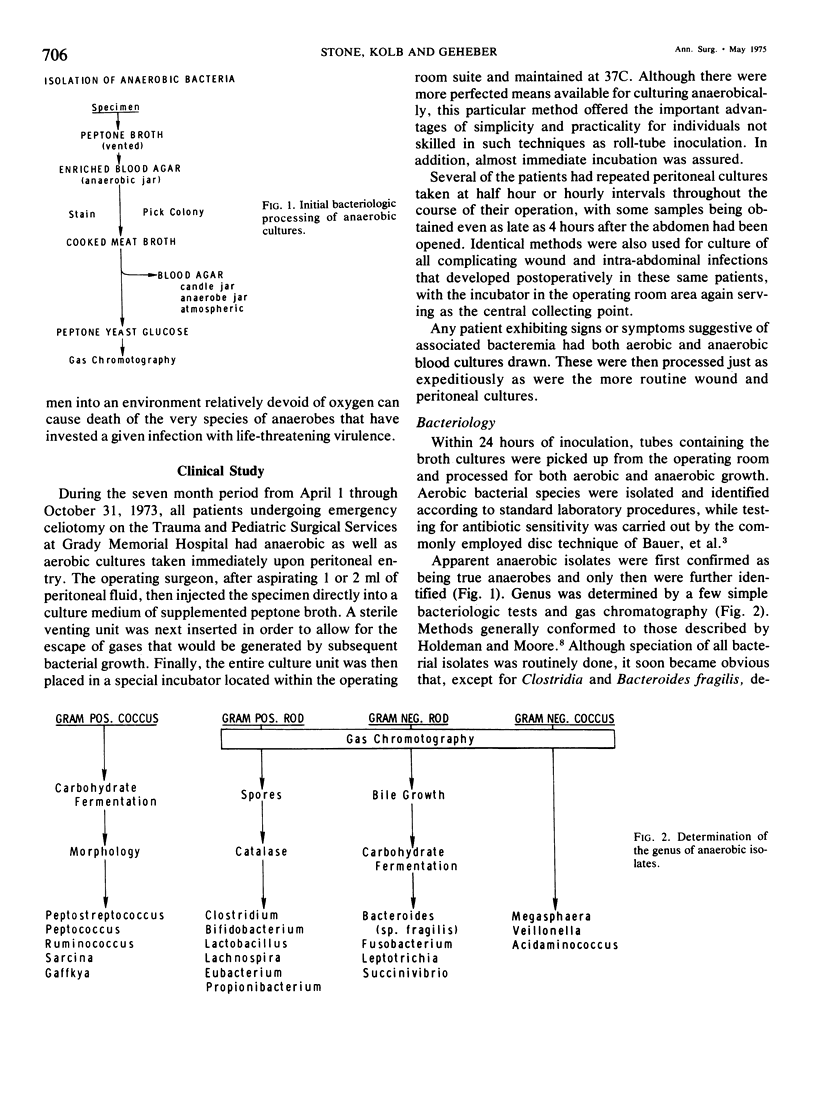
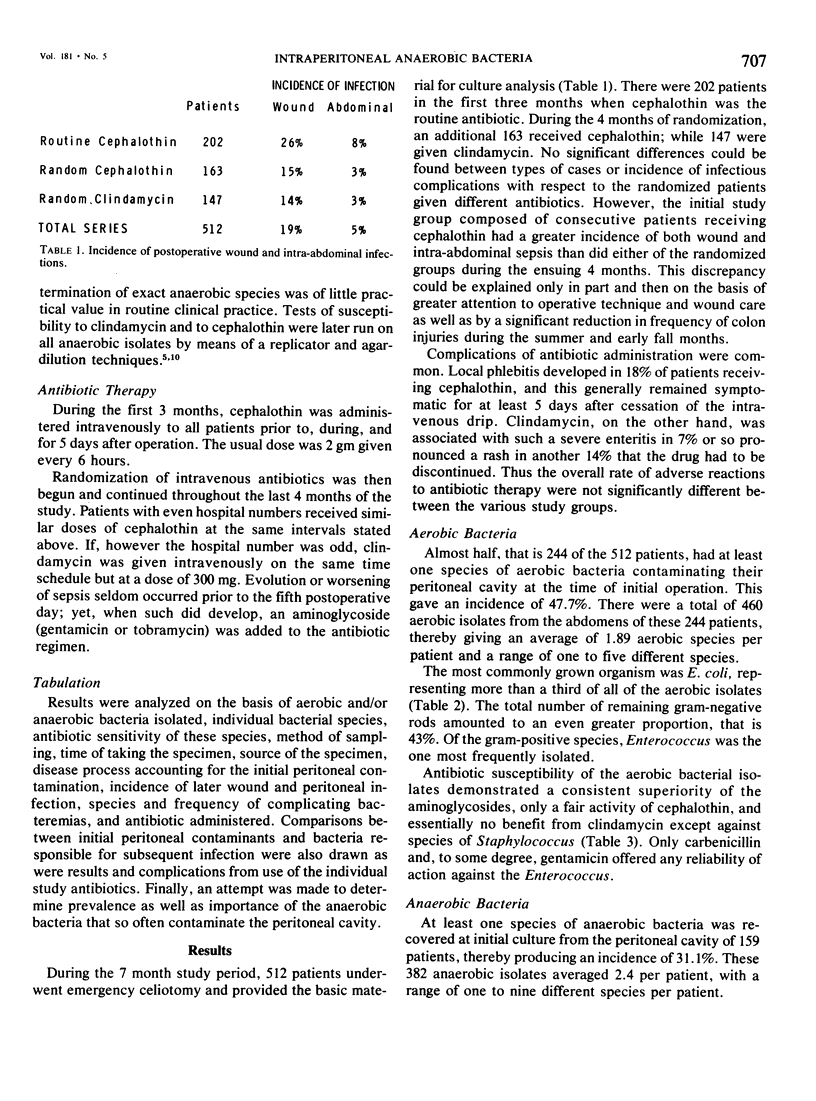
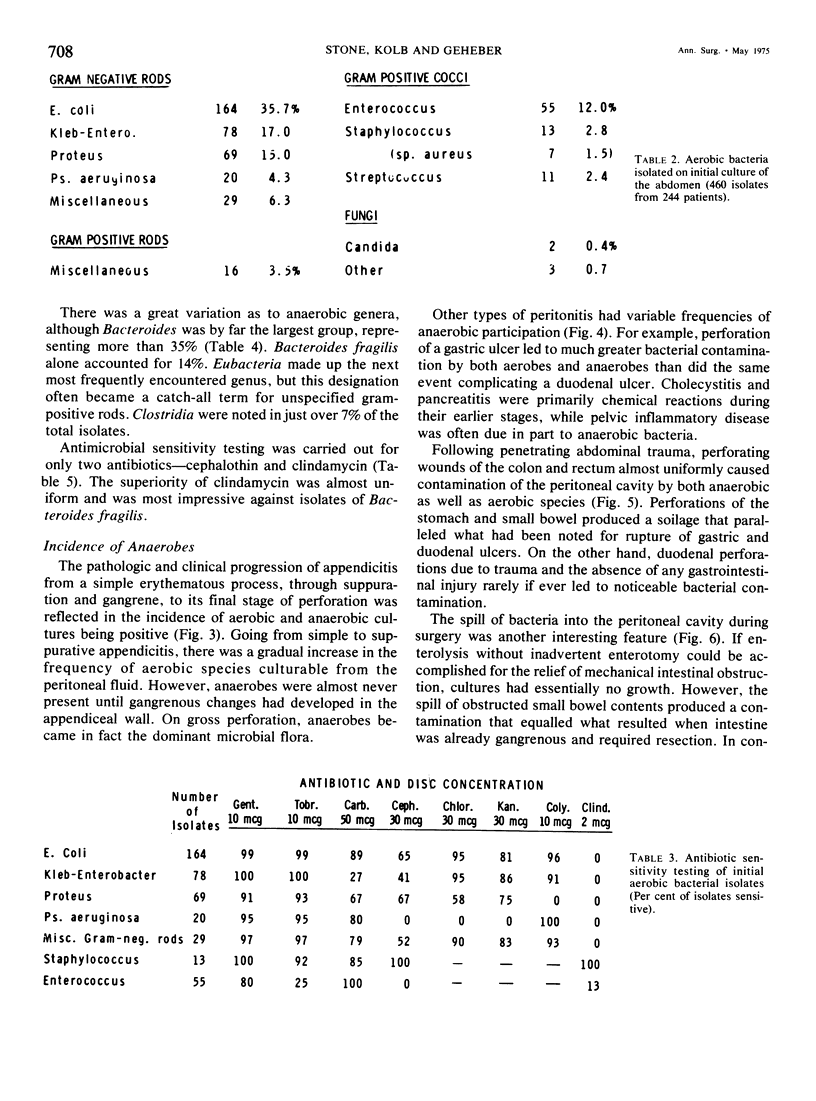
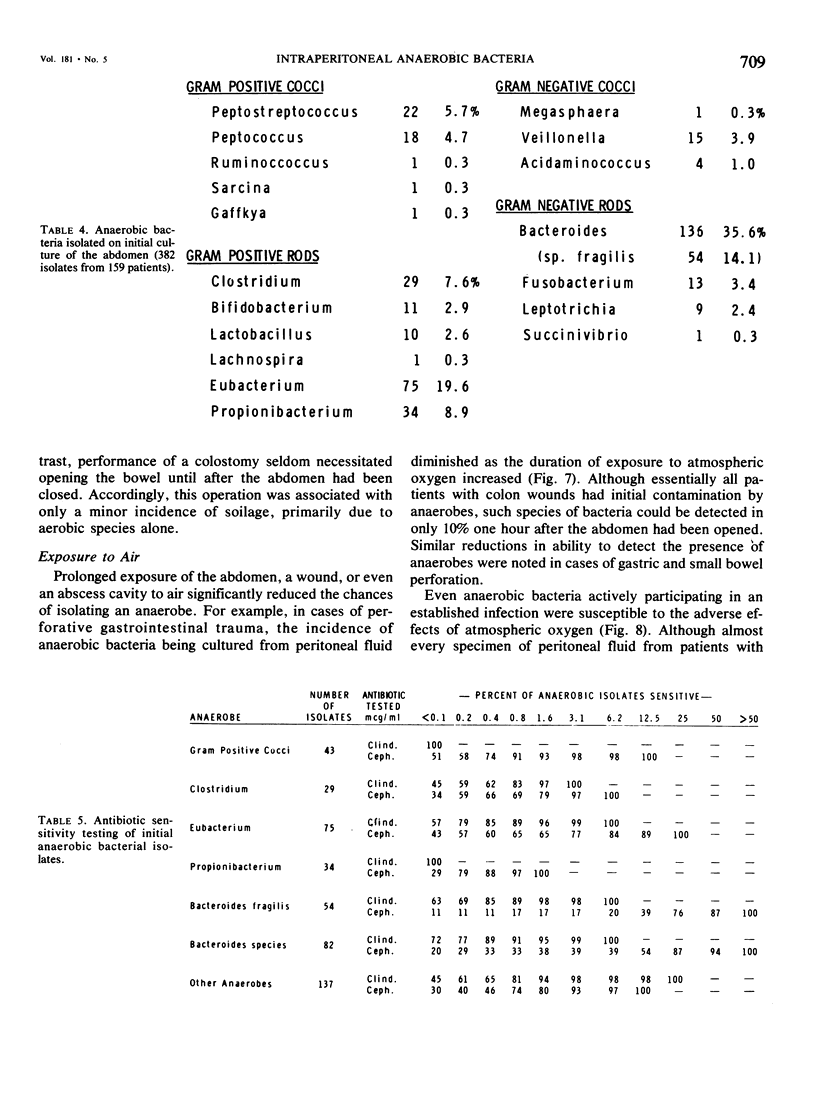
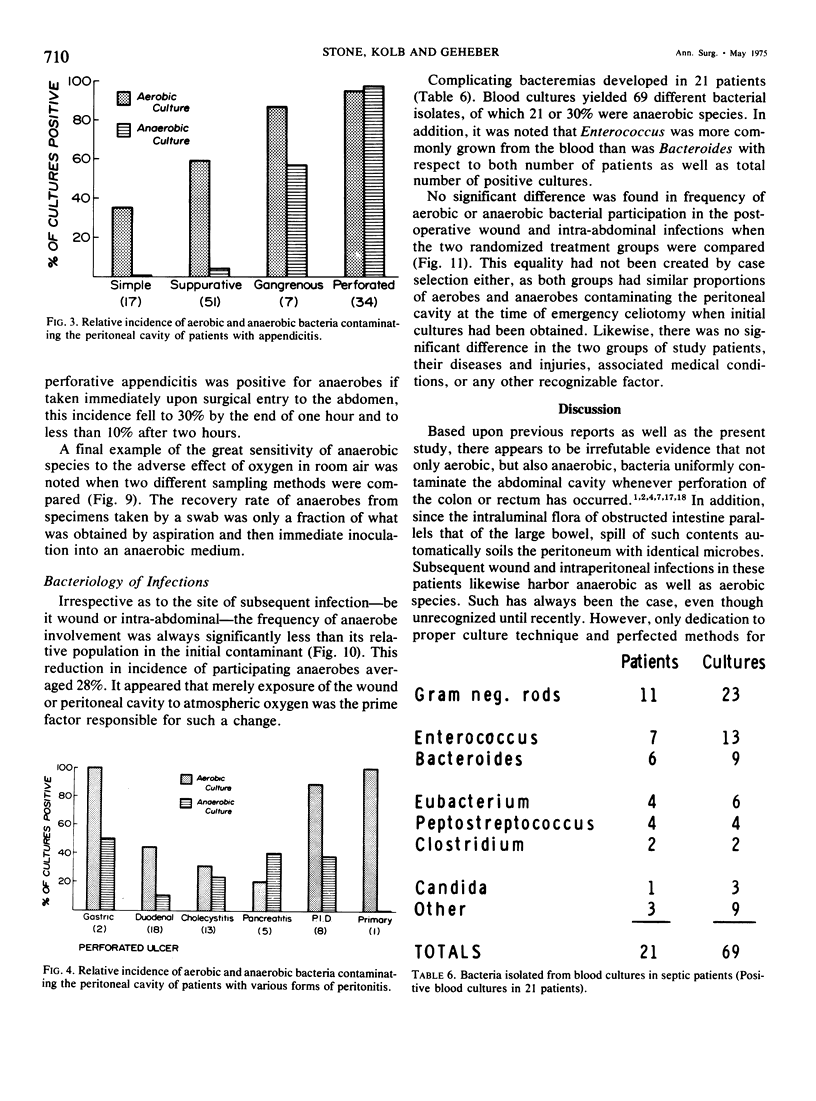
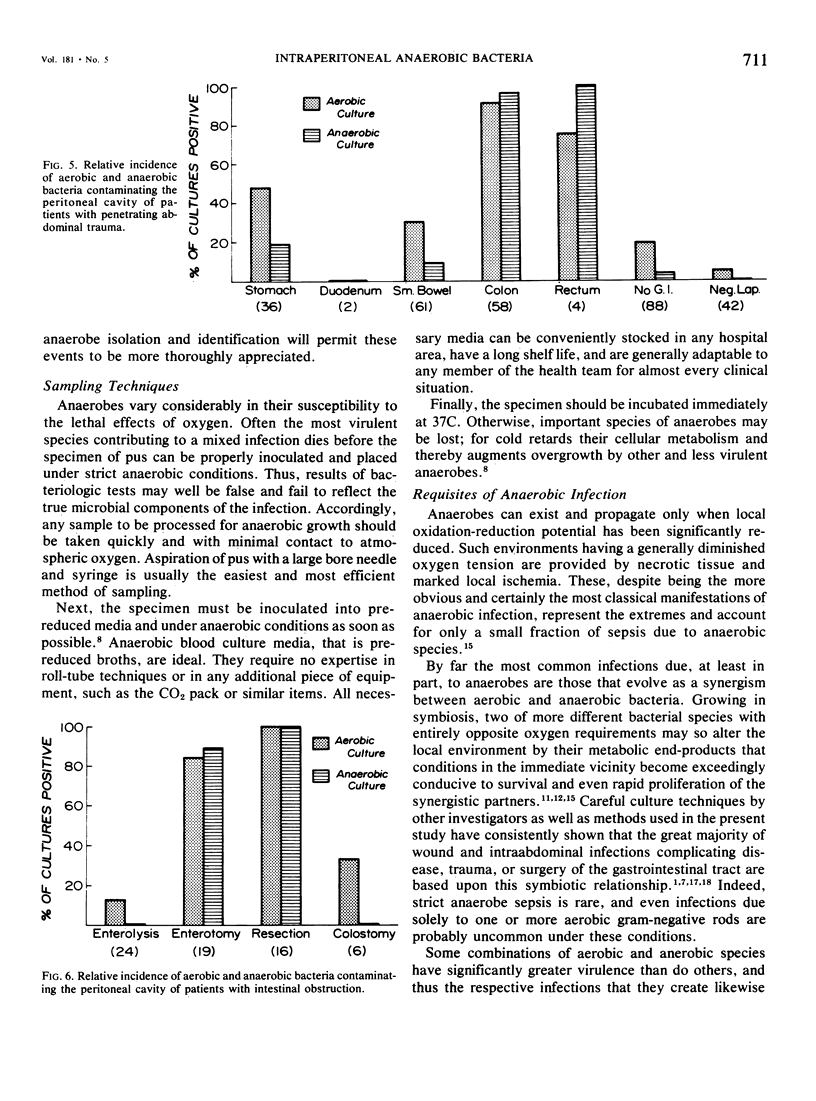
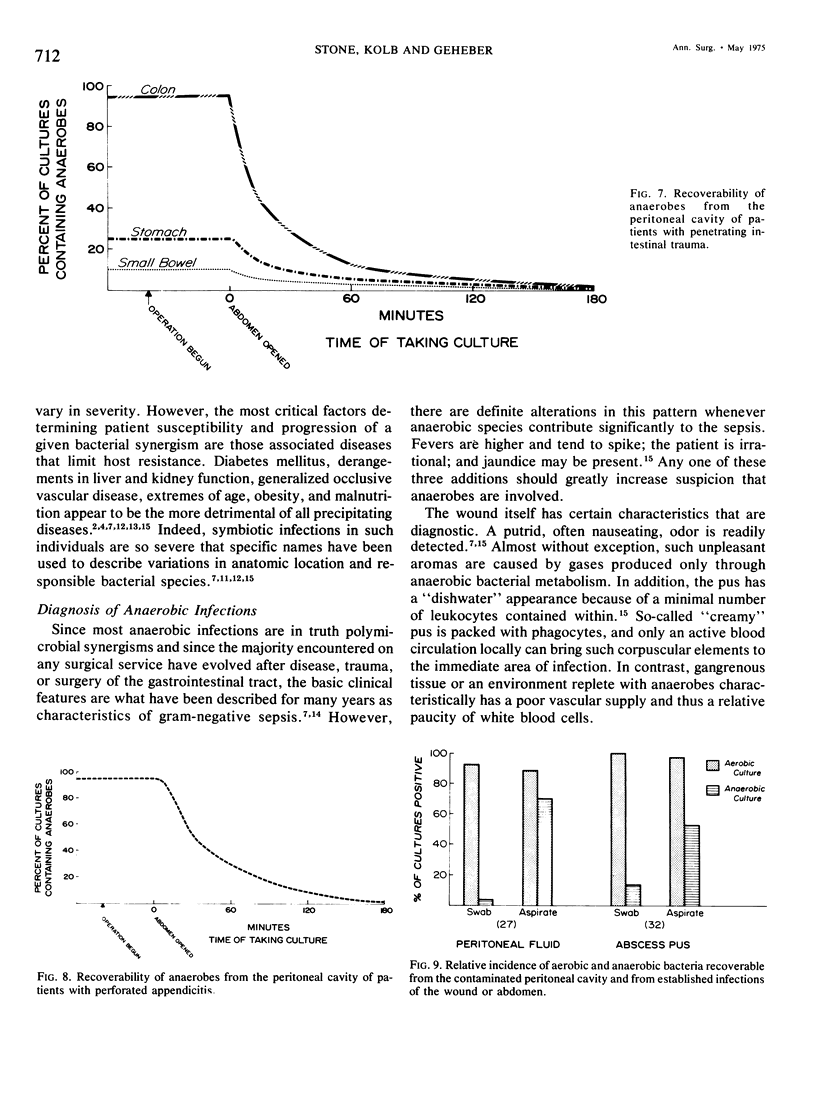
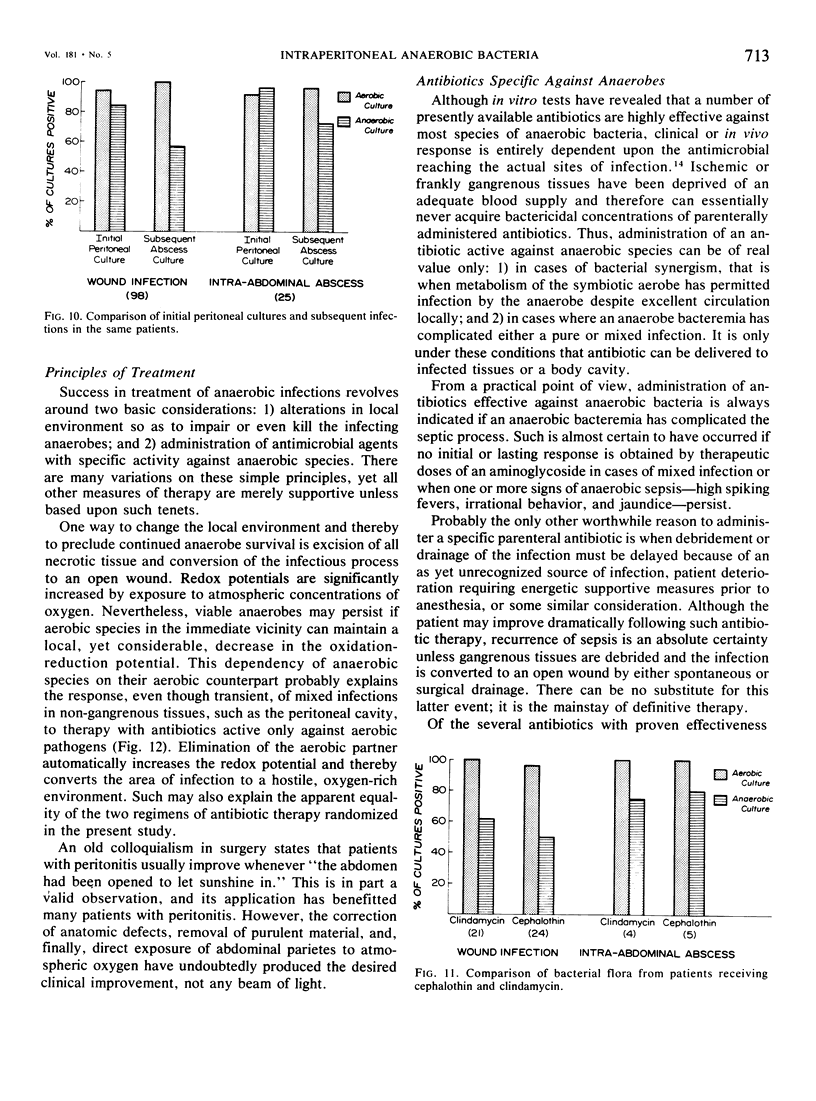
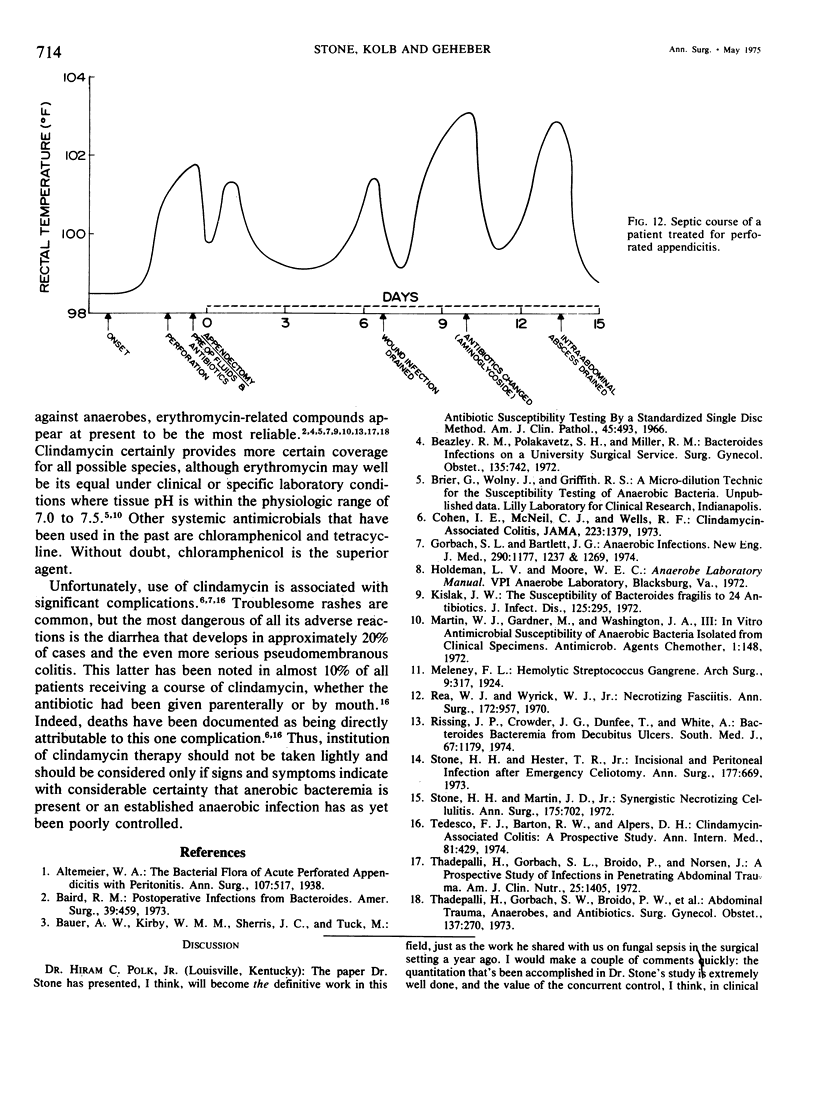
Selected References
These references are in PubMed. This may not be the complete list of references from this article.
- Altemeier W. A. THE BACTERIAL FLORA OF ACUTE PERFORATED APPENDICITIS WITH PERITONITIS: A BACTERIOLOGIC STUDY BASED UPON ONE HUNDRED CASES. Ann Surg. 1938 Apr;107(4):517–528. doi: 10.1097/00000658-193804000-00006. [DOI] [PMC free article] [PubMed] [Google Scholar]
- Baird R. M. Postoperative infections from bacteroides. Am Surg. 1973 Aug;39(8):459–464. [PubMed] [Google Scholar]
- Bauer A. W., Kirby W. M., Sherris J. C., Turck M. Antibiotic susceptibility testing by a standardized single disk method. Am J Clin Pathol. 1966 Apr;45(4):493–496. [PubMed] [Google Scholar]
- Beazley R. M., Polakavetz S. H., Miller R. M. Bacteroides infections on a university surgical service. Surg Gynecol Obstet. 1972 Nov;135(5):742–746. [PubMed] [Google Scholar]
- Cohen L. E., McNeill C. J., Wells R. F. Clindamycin-associated colitis. JAMA. 1973 Mar 19;223(12):1379–1380. [PubMed] [Google Scholar]
- Gorbach S. L., Bartlett J. G. Anaerobic infections (second of three parts). N Engl J Med. 1974 May 30;290(22):1237–1245. doi: 10.1056/NEJM197405302902207. [DOI] [PubMed] [Google Scholar]
- Kislak J. W. The susceptibility of Bacteroides fragilis to 24 antibiotics. J Infect Dis. 1972 Mar;125(3):295–299. doi: 10.1093/infdis/125.3.295. [DOI] [PubMed] [Google Scholar]
- Martin W. J., Gardner M., Washington J. A., 2nd In vitro antimicrobial susceptibility of anaerobic bacteria isolated from clinical specimens. Antimicrob Agents Chemother. 1972 Feb;1(2):148–158. doi: 10.1128/aac.1.2.148. [DOI] [PMC free article] [PubMed] [Google Scholar]
- Rea W. J., Wyrick W. J., Jr Necrotizing fasciitis. Ann Surg. 1970 Dec;172(6):957–964. doi: 10.1097/00000658-197012000-00005. [DOI] [PMC free article] [PubMed] [Google Scholar]
- Rissing J. P., Crowder J. G., Dunfee T., White A. Bacteroides bacteremia from decubitus ulcers. South Med J. 1974 Oct;67(10):1179–1182. doi: 10.1097/00007611-197410000-00011. [DOI] [PubMed] [Google Scholar]
- Stone H. H., Hester T. R., Jr Incisional and peritoneal infection after emergency celiotomy. Ann Surg. 1973 Jun;177(6):669–678. doi: 10.1097/00000658-197306000-00005. [DOI] [PMC free article] [PubMed] [Google Scholar]
- Stone H. H., Martin J. D., Jr Synergistic necrotizing cellulitis. Ann Surg. 1972 May;175(5):702–711. doi: 10.1097/00000658-197205000-00010. [DOI] [PMC free article] [PubMed] [Google Scholar]
- Tedesco F. J., Barton R. W., Alpers D. H. Clindamycin-associated colitis. A prospective study. Ann Intern Med. 1974 Oct;81(4):429–433. doi: 10.7326/0003-4819-81-4-429. [DOI] [PubMed] [Google Scholar]
- Thadepalli H., Gorbach S. L., Broido P. W., Norsen J., Nyhus L. Abdominal trauma, anaerobes, and antibiotics. Surg Gynecol Obstet. 1973 Aug;137(2):270–276. [PubMed] [Google Scholar]
- Thadepalli H., Gorbach S. L., Broido P., Norsen J. A prospective study of infections in penetrating abdominal trauma. Am J Clin Nutr. 1972 Dec;25(12):1405–1408. doi: 10.1093/ajcn/25.12.1405. [DOI] [PubMed] [Google Scholar]


